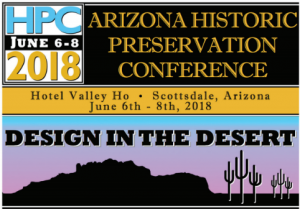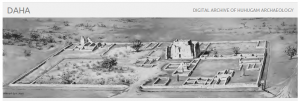The lively and well-attended Arizona Statewide Historic Preservation Conference was held earlier this month at the Hotel Valley Ho in Scottsdale. The Center for Digital Antiquity organized two sessions for the conference.

One of the sessions highlighted the Digital Archive for Huhugam Archaeology (DAHA) project underway at the Center in collaboration with the Amerind Museum , ASU Libraries, the ASU Center for Archaeology and Society, other ASU scholars, Pueblo Grande Museum, the City of Phoenix Archaeologist office, other public agencies. Also involved are Archaeology Southwest, Desert Archaeology, Statistical Research, Inc., and a number of other CRM firms in southern Arizona.
Organized by Leigh Anne Ellison, who summarized the various aspects of DAHA, presentations also were made by David Martinez, Frank McManamon, and Adam Brin. Martinez described the dialogue with tribal communities as part of the project. McManamon summarized the building of content for DAHA in a collection in tDAR, the Digital Archaeological Record. Brin summarized research on natural language processing and “text mining” as part of the project that will enable more detailed research on the rich body of technical reports and other documents assembled in the digital archive.

The other Digital Antiquity session, organized by Frank McManamon, took on the topic of “Designing and Carrying Out Digital Curation for Data Management, Research, and Sharing.” Presentations by Bill Doelle (Archaeology Southwest), Sharlot Hart (NPS), Lauren Jelinek (Phoenix Area Office, Bureau of Reclamation), and Teresita Majewski (Statistical Research, Inc) described the work being done by their organizations to make the large amounts of digital data that have been and are being created by contemporary archaeological investigations discoverable, accessible, usable, and preserved. A lively discussion ensued among the panelists and with the overflowing audience. An important point emphasized in the discussion is that the mass of data and reporting that has been created by half a century and more of CRM and rescue/salvage archaeology, plus the new data being produced now is not being effectively used. These legacy data and reports are a “gold mine” that need to be taken into account using digital methods and techniques to find, access, and use the information they contain.